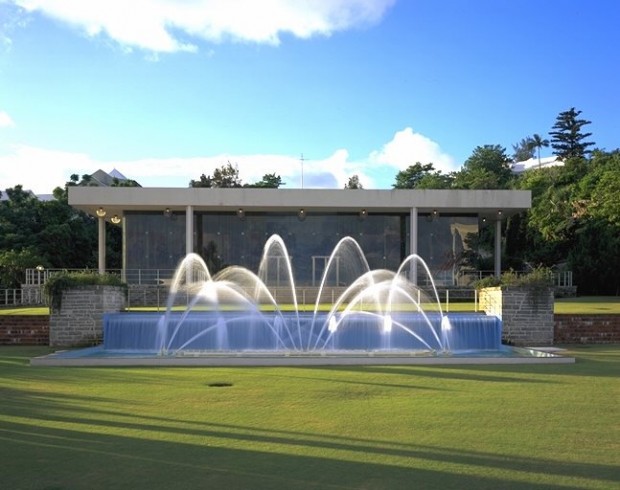Bacardi And A Tale of Two Cities
It’s Modern architecture’s tale of two cities — Hamilton, Bermuda and Berlin, Germany.
Bacardi Limited recently celebrated the opening of a joint event with Neue Nationalgalerie der Staatlichen Museen zu Berlin (New National Gallery in Berlin) in honour of famed German-American architect Ludwig Mies van der Rohe.
The celebrated architect designed both Bacardi’s landmark Bermuda headquarters on Pitts Bay Road and its near-identical twin in Berlin, the Neue Nationalgalerie.
While rum remains its flagship product, Bermuda-based Bacardi is now the largest privately held spirits company in the world marketing wide variety of internationally-recognised spirits and wines including Dewar’s whiskey and Grey Goose vodka.
The collection – titled “There is a Reason” – featured the acclaimed works, drawings, plans and photographs of Bauhaus architect Mies van der Rohe and his unique relationship with both Bacardi and the Neue Nationalgalerie.
Mies designed two buildings for Bacardi in Mexico and Cuba. However his plans for the company’s global headquarters in Santiago de Cuba were never built due to the Cuban Revolution, the confiscation of Bacardi assets in Cuba after Fidel Castro came to power in 1959 and the subsequent exile of the Bacardi family by the Cuban government.
Bacardi revived plans for its Mies-designed global headquarters when it relocated its global heaquarters to Bermuda in the 1960s. In the meantime, the architect used the basis of his stalled Bacardi design for the Berlin museum.
The result was two strikingly similar buildings an ocean apart — the Neue Nationalgalerie opened in 1968 while the Bacardi International Limited building was constructed in Bermuda in 1972.
“Neue Nationalgalerie showcases international artists from the 20th century while engaging all in the wonder of the arts. This presentation blends these two concepts so masterfully — just as Mies did with the original design of the Bacardi building in Cuba that led to this famed museum,” said Dr. Joachim Jäger, head of Neue Nationalgalerie [pictured below]. “We share such a common and timeless bond of classic simplicity and elegance with Bacardi and are happy to celebrate Mies’ brilliant works.”
In 1929, Ludwig Mies van der Rohe first came into contact with Bacardi at the Barcelona International Exposition. At the Exposition, Bacardi and the Mies-designed Barcelona Pavilion were both awarded grand prizes for their originality.
Then-Bacardi president Jose “Pepín” Bosch hired Mies to design buildings for the Company’s headquarters in Santiago de Cuba and its Mexican operations in Tultitlán.
Mies traveled to Santiago de Cuba in 1957 where Bosch conveyed his vision for an “office without walls.”
In his words, Bosch wanted an office “where there were no partitions, where everybody, both officers and employees, could see each other.” Mies picked up a napkin and began handsketching his first thoughts on the building design. A photograph of this napkin sketch was displayed in the recent gallery collection.
Ludwig Mies van der Rohe, born Maria Ludwig Michael Mies (March 27, 1886 – August 17, 1969) was a German-American architect. He was commonly referred to and addressed by his surname, “Mies”, by his colleagues, students, writers, and others. Mies is widely regarded as one of the pioneering masters of Modern architecture.
He created an influential 20th century architectural style, stated with extreme clarity and simplicity. He strived toward architecture with a minimal framework of structural order balanced against the implied freedom of free-flowing open space. He called his buildings “skin and bones” architecture.




this is quite an old photo of the bermuda bacardi building.
it was renovated completely over 10 years ago with a lower addition provided over 10,000 sq. ft. together with an elaborate new fountain to replace the antiquated one shown in the photograph.
the new addition was consciously designed to not detract from the original mies building – and is therefore hard to actually determine it exists.
the new fountain plays a key role in achieving this goal – and also allows the occupants an interplay with the fountain element from the interior workspaces.
david yuhasz – design architect for bacardi bermuda project